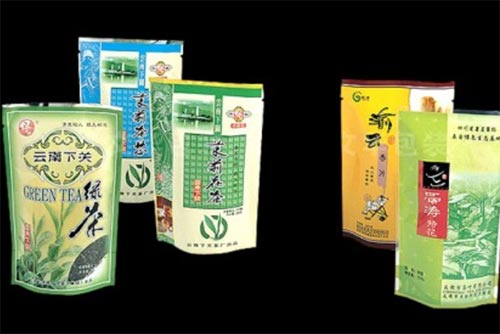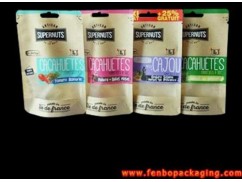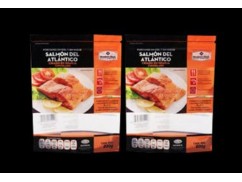What materials are used for stand up pouches?
Mar 12,2024 | Views: 1059
Stand-up pouches, also known as flexible pouches or stand-up bags, are commonly made from multiple layers of different materials, each chosen for specific properties like strength, barrier protection, and flexibility. The materials typically used in the construction of stand-up pouches include:
Polyethylene (PE): PE is a commonly used material in pouch construction due to its flexibility and moisture resistance. It can be used as the innermost layer to provide a barrier against moisture.
Polypropylene (PP): PP is another common material used in pouch construction. It provides strength and heat resistance. It's often used as the outer layer for durability and printability.
Nylon (PA): Nylon is used to enhance the puncture resistance and barrier properties of stand-up pouches. It can be used as an inner or outer layer depending on requirements.
Metallized Films: These films consist of a thin layer of metal deposited onto a substrate (often PET or PP). They provide excellent barrier properties against oxygen, moisture, and light.
Paper: In some cases, paper is used as an outer layer or as a component in the construction of stand-up pouches. It provides stiffness and printability.
These materials are often combined in different configurations to create pouches that meet specific requirements for product protection, shelf life, and presentation. The choice of materials depends on factors such as the product being packaged, shelf life requirements, barrier properties needed, printing capabilities, and environmental considerations.
Prev: What size stand up pouch do I need?
Next: How do you fill a stand up pouch?
Polyethylene (PE): PE is a commonly used material in pouch construction due to its flexibility and moisture resistance. It can be used as the innermost layer to provide a barrier against moisture.
Polypropylene (PP): PP is another common material used in pouch construction. It provides strength and heat resistance. It's often used as the outer layer for durability and printability.
Polyester (PET): PET is known for its strength and clarity. It's often used as a barrier layer in stand-up pouches to protect against oxygen and light.
Nylon (PA): Nylon is used to enhance the puncture resistance and barrier properties of stand-up pouches. It can be used as an inner or outer layer depending on requirements.
Metallized Films: These films consist of a thin layer of metal deposited onto a substrate (often PET or PP). They provide excellent barrier properties against oxygen, moisture, and light.
Paper: In some cases, paper is used as an outer layer or as a component in the construction of stand-up pouches. It provides stiffness and printability.
These materials are often combined in different configurations to create pouches that meet specific requirements for product protection, shelf life, and presentation. The choice of materials depends on factors such as the product being packaged, shelf life requirements, barrier properties needed, printing capabilities, and environmental considerations.





